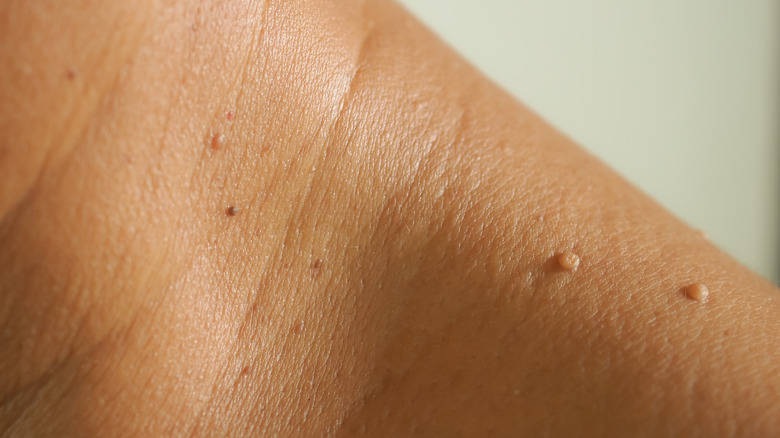The Best Way To Get Rid Of Skin Tags
Skin blemishes have a way of wearing a person down. There's just something about skin imperfections that can make us uncomfortable or leave us thinking that other people notice them as much as we do. Even when the blemish is covered up, it can still grab our attention. And when that blemish is a skin tag, the way it does so can be downright painful.
Speaking with Shape, Dr. Deanne Mraz Robinson, M.D., explained that skin tags are little more than blood vessels surrounded by collagen and then covered by skin. She went on to say that they generally aren't dangerous and can be left alone if they don't bother a person. At worst, she added, they may become irritated, itch, or bleed when chafed.
Little is known about the cause of skin tags, though experts agree that genetics plays a role in some way. Friction also seems to be involved, since many skin tags develop in places where skin rubs against itself. This can include the skin between the legs, the areas under the arms, and the folds around the eyes. The only thing medical experts are absolutely sure of is the best way to remove skin tags.
Ask for professional help
As it turns out, there are numerous home remedies for skin tags. The Harvard Health Blog names tea tree oil and apple cider vinegar as two such treatments. However, no studies have been conducted on these substances; thus, their success rate is completely unproven. In addition, certain oils, particularly tea tree oil, can cause allergic reactions in some people.
There are a few home remedies with a proven success rate, though. Home freezing kits, similar to those that freeze away warts, mimic the type of treatment available from a doctor. Such kits can require multiple applications, and may ultimately cause more discomfort than the skin tag itself.
Out of all the available options, the best one is to see a doctor or dermatologist. Penn Medicine explains that medical professionals can either freeze, burn, or surgically remove the skin tag. This cuts down on the chances of infection and potential scarring, paving the way for the best possible post-skin tag treatment outcome.


